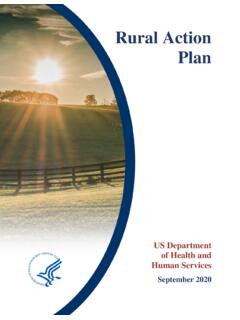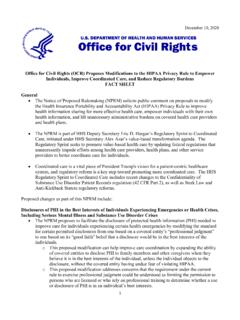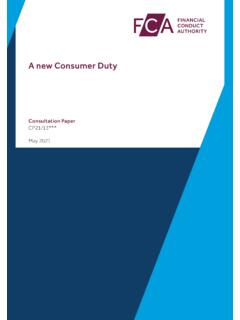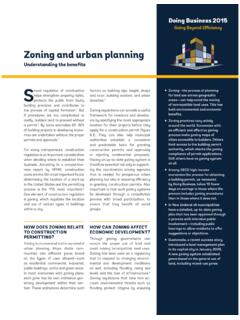Transcription of Canadian Cost-Benefit Analysis Guide
1 Interim Canadian Cost-Benefit Analysis Guide regulatory Proposals Her Majesty the Queen in Right of Canada, represented by the President of the Treasury Board, 2007. Catalogue No. BT58-5/2007. ISBN 978-0-662-05039-1. This document is available on the Treasury Board of Canada Secretariat website at This document is also available in alternative formats on request. Canadian Cost-Benefit Analysis Guide : regulatory Proposals Table of Contents I. Introduction .. 1. II. The Need for Government Intervention .. 2. III. Impact 3. STEP 1: Identifying Issues, Risks, and the Baseline Scenario.
2 4. Issue ..4. Incremental impacts ..4. Establishing the baseline Risk assessment ..5. STEP 2: Setting STEP 3: Developing Alternative regulatory and Non- regulatory Options ..8. STEP 4: Assessing benefits and Costs ..11. Identification of significant Measurement of Measurement of Criteria ..27. cost -effectiveness Analysis ..29. Impacts on stakeholders ..30. Discount STEP 5: Preparing an Accounting Statement ..39. Cost-Benefit Analysis for each option (accounting statement section A)..39. Stakeholder Analysis for each option (accounting statement section B)..40. References.
3 44. Canadian Cost-Benefit Analysis Guide : regulatory Proposals I. Introduction The Canadian Cost-Benefit Analysis Guide is provided for the use of federal departments and agencies as they perform Cost-Benefit Analysis to support regulatory decisions. The Guide incorporates the evolution of regulatory policy and developments in the Analysis of the impacts of regulations in Canada and elsewhere over the past decade. In November 1999, the Government of Canada instituted the policy that a Cost-Benefit Analysis must be carried out for all significant regulatory proposals to assess their potential impacts on the environment, workers, businesses, consumers, and other sectors of regulatory authorities must make a convincing case that the regulatory approach recommended is superior to non- regulatory alternatives.
4 They must demonstrate not only that the benefits to Canadians outweigh the costs, but also that they have structured the regulatory program so that the excess of benefits over costs is maximized. In April 2007, the Cabinet Directive on Streamlining Regulation replaced the 1999 Government of Canada regulatory One of the key requirements of this new directive is that departments and agencies assess regulatory and non- regulatory options to maximize net benefits to society as a whole. Hence, all regulatory departments and agencies are expected to show that the recommended option maximizes the net economic, environmental, and social benefits to Canadians, business, and government over time more than any other type of regulatory or non- regulatory action.
5 Instrument choice is thus essential to the regulatory process. Departments and agencies are also expected to show how the costs and benefits are distributed across the various affected parties, sectors of the economy, and regions of Canada. As a best practice, departments and agencies are expected to prepare an accounting statement. The purpose of this Guide is to provide guidance to departments and agencies on how to conduct a sound Cost-Benefit Analysis . Other countries and international communities such as the United States, Australia, the European Commission, etc. have also come to recommend that a Cost-Benefit Analysis be the centre of regulatory Analysis .
6 A Cost-Benefit Analysis has become one of the key analytical tools employed to assist in making this determination before approval is given for any significant new regulation. Such an Analysis highlights the importance of identifying and measuring the economic benefits and costs as an essential input into the design process of such regulatory actions. Increased government interest in the consequences of regulating has led to the development of various Cost-Benefit Analysis guides in countries such as the United States and Australia; some international organizations have also developed guides on the 1.
7 Government of Canada, Privy Council Office, Government of Canada regulatory Policy, November 1999. 2. Government of Canada, Cabinet Directive on Streamlining Regulation, April 2007. There are generally around 350 federal regulations developed in Canada each year. Only proposals with impacts judged to be of medium and high significance will require a rigorous Cost-Benefit Analysis . See Canada, Privy Council Office, Framework for the Triage of regulatory Submissions, May 2006. 3. In the United States, guides were published by the Environmental Protection Agency (Guidelines for Preparing Economic Analyses, September 2000) and the Office of Management and Budget (Circular A-4, September 2003).
8 In Australia, the Office of Regulation Review released A Guide to Regulation, second edition, December 1998. International organizations have released the following documents: the Organisation for Economic Co-operation and Development (OECD), regulatory Impact Analysis (RIA) Inventory, April 2004; OECD, Cost-Benefit Analysis and Environment: Recent Developments, 2005;. and the European Commission, Impact Assessment Guidelines, June 15, 2005. 1. Treasury Board of Canada Secretariat The Cost-Benefit Analysis should be guided by the principle of proportionality. In other words, the effort to do the Cost-Benefit Analysis should be commensurate with the level of expected impacts on Canadians.
9 For further details, see the Framework for the Triage of regulatory In Canada, a Guide was first published in The 1995 Guide required updating to reflect the changes in the economy, new regulatory policies, and advances in analytical methods. This Guide is designed to outline in brief the analytical methodologies, empirical techniques, and practical approaches to performing analyses of regulatory policies. Efficiency is not the sole criterion for decision making of a regulatory policy. The stakeholder Analysis of who gains or loses as a result of a regulation can be critical to decision making; it is therefore included as part of the overall impact Analysis in this Guide .
10 This Guide will assist regulatory officials in employing techniques developed elsewhere to produce consistent high-quality Cost-Benefit analyses of proposed and existing regulations. II. The Need for Government Intervention The Cabinet Directive on Streamlining Regulation notes that, Regulation is an important tool for protecting the health and safety of Canadians, preserving the environment, and securing the conditions for an innovative and prosperous economy. In a perfectly competitive market, the outputs of the goods and services of the economy and the set of prices for these outputs are determined in the marketplace in accordance with consumers' preferences and incomes, as well as producers' minimization of cost for a given output.









